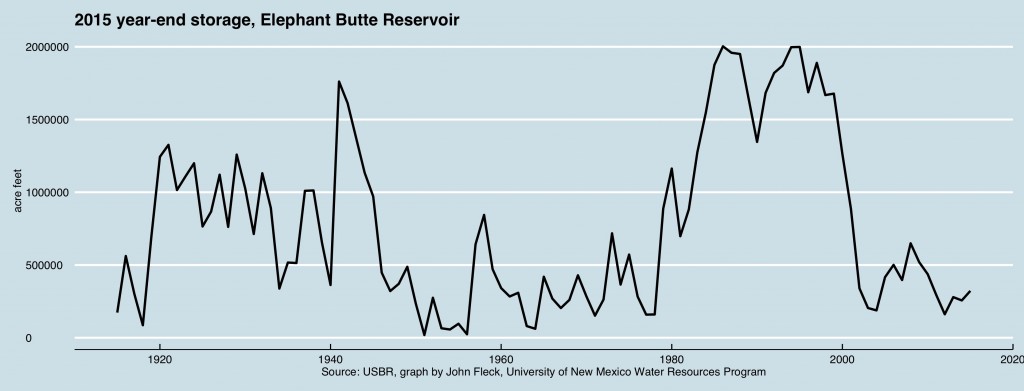Elephant Butte Reservoir, the largest on the Rio Grande, will end 2015 with roughly 322,000 acre feet of water, or about 16 percent full. That’s up from 11.5 percent last year at this time:

Year-end Elephant Butte storage
Elephant Butte provides water, primarily for irrigation, for southern New Mexico, Texas, and northern Mexico. When Elephant Butte is short, as it has been most recent years, farmers shift to groundwater for their permanent crops (especially pecans) and fallow some of their field crops.
This graph shows the depth and duration of what we call “the drought of the 1950s”. You can see that it really began in the 1940s and we didn’t really pull out of it until the late 1970s. It was a badass.
A reader recently asked the potential impact of a good snowpack this year on the Butte. This graph shows how it took a series of almost entirely good years from 1974 to 1982, with only one bad year mixed in, to refill the reservoir. It’s really big.
Data courtesy USBR water ops.
update: this post was updated to correct a typo on the amount of water in Elephant Butte. 322kaf, not 232kaf
